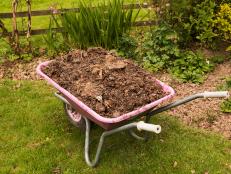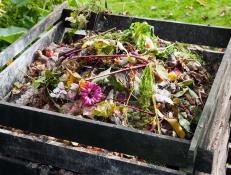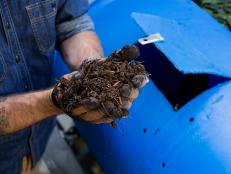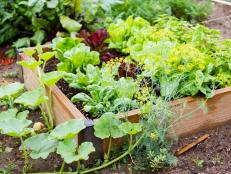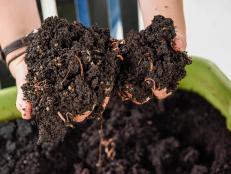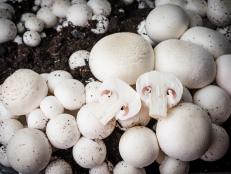Does a Compost Bin Need a Bottom?
Maybe. It depends on a few things like climate, location of the bin and if you need to deter critters. Read on to find out if your compost bin needs a bottom.

Gardener’s Supply Company at Gardeners.com
A compost pile is full of living organisms: ones you can see, like earthworms and millipedes, and ones you cannot see, like bacteria and fungus. All of these organisms work together to turn garden and kitchen waste into a biologically active, rich soil additive — black gold, as most gardeners call it.
When you first start composting, it’s easy to get bogged down with all the details. Where should you put a compost bin? Should you cover a compost pile? Does a compost bin need a bottom? How do you keep wildlife out of your compost? Here are some answers to help solve your questions about compost.
The Best Place For a Compost Bin
Build your compost pile in the place that makes the most sense. The composting process happens in sun or shade (think of the forest floor — lots of composting happens there), although the process occurs more quickly in a sunny spot. Compost in the sun also tends to dry out more, so you may need to moisten the pile more often.
Many times gardeners relegate the compost pile to a back corner of their lot, mainly because of aesthetics. A compost pile isn’t the prettiest addition to your landscape. But you might consider siting it near where you’ll use it most. For instance, if your compost winds up on your veggie garden, place the pile near that growing area so you won’t have to haul the finished compost as far.
Does a Compost Bin Need a Bottom?
If you’re building your compost bin from scratch, you don’t usually need to add a bottom to it. Having composting materials sit directly on soil allows microorganisms, worms and insects — creatures that facilitate the composting process — to move from soil into compost.
As materials break down, they release moisture. Not having a solid base also means that moisture can drain freely from the pile. If excess moisture can’t drain, a compost pile can become waterlogged, which kills beneficial organisms and bacteria and creates a foul odor.
A solid bottom on a compost bin makes it somewhat easier to remove finished compost. But you can also scoop finished compost out of a pile sitting directly on soil — it just might require back-bending or kneeling.
Manufactured compost bins and tumblers include a solid bottom that usually has drainage holes. If a bottom comes with your composter, definitely use it. If you’re building a pile from scratch, place it directly on soil or lawn, and expect great results. If your compost bin needs to go on a hard surface, build a raised bed to place the bin on, so you have a way to catch drainage.
Many experienced gardeners start a compost pile with a layer of branches and sticks piled a few inches high. This helps elevate the pile and allows airflow beneath composting materials. Source branches from local tree trimmers or a yard waste drop-off site. Or save spent holiday evergreens for a foundation for future piles.
How to Keep Critters Out of Compost
One reason that gardeners like to have a bottom on a compost bin is to exclude critters like mice, voles, shrews and other small animals. These creatures dig into compost to feast on kitchen scraps or plant matter. In cold-winter zones, small animals may burrow into the pile to snuggle up in the warmth. In spring, these animals typically exit the pile.
To prevent animals from tunneling into a bottomless compost bin, line the base with hardware cloth or chicken wire. Use a material with the smallest openings you can find to keep the most critters from gaining access to your pile.







